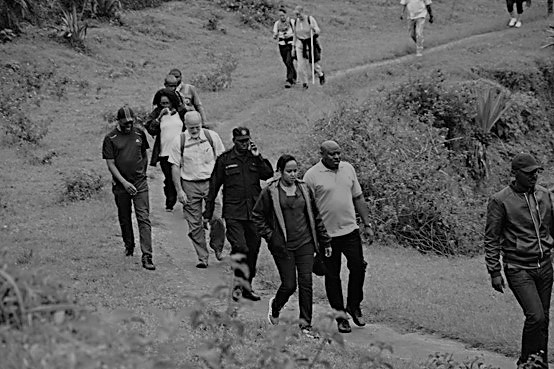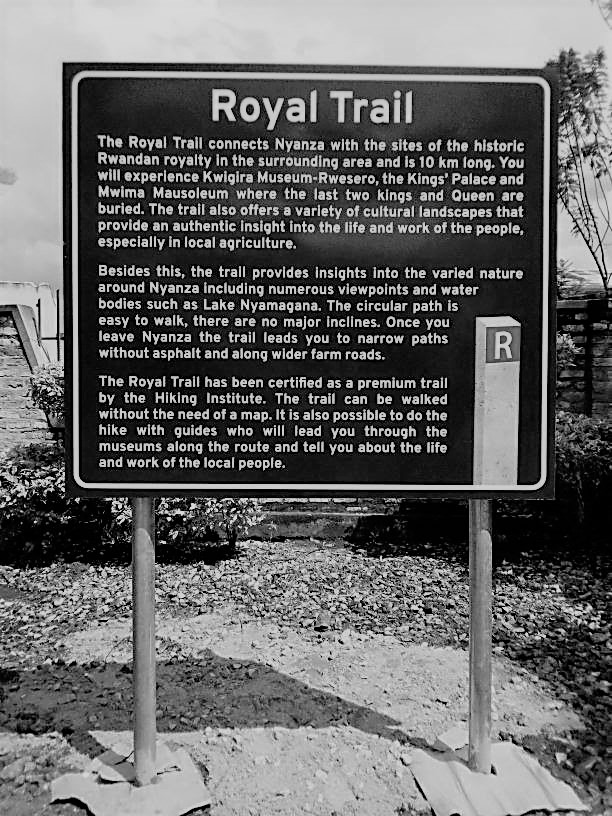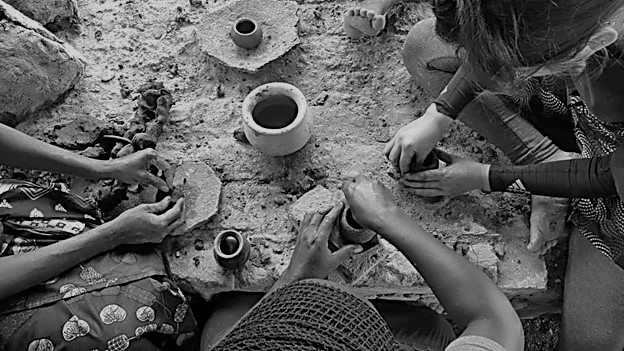Network Stories | David Nkusi
Describe your organization and the unique work that it is doing. Who and what are affected by the work? How does/will the work impact people’s lives
First and foremost, I’m affiliated to the Institute of National Museums of Rwanda (INMR), a government entity that was founded in 1989. The Institute is home to eight (8) museums across the country.
Our MISSION: To collect, preserve, research, and present Rwandese past and present cultural and natural national heritage.
VISION: To provide museums and heritage sites around the country with a platform for educating and exposing Rwandan Cultural and Natural richness.
The Project: NYANZA CULTURAL TRAILS
INMR is currently involved in promoting cultural tourism in the country with a pilot project in Nyanza District, Southern province of Rwanda. The cultural trails, dubbed “Nyanza Cultural Trails” are unique in Rwanda as they are circular in nature and connect a variety of historical (heritage sites, museums) & natural landmarks (wetlands, green hills) in the ancient capital of Rwandan Kingdom.
This development is a joint initiative between the Institute of National Museums of Rwanda (INMR) and Eco-Emploi program of GIZ, supported by Senior Expert Services (SES) from Germany. The project aims at diversifying tourism in Rwanda and adding more touristic value to Nyanza as a Destination Managed Area (DMA) and not just a transit hub.
Why circular trails:
- They are economically viable & connected to a variety of tourism businesses and attractive locations with splendid panoramic views
- The hikers visit for pleasure & stay for more days, getting authentic experiences in Rwanda
- These are premium certified routes with good security & in good condition.
THE ROYAL TRAIL
The ‘Royal Trail’ is a cultural route at the European premium level with maximum variety. The trail is a unique, outstanding 10 km route which offers hikers experience in a compact manner; combining history, culture and Rwandan rural life. 10% of the paths in the urban areas of Nyanza are on asphalt, 30% of the route is path and 60% of the route is on pleasant dirt roads. The Royal Trail connects Nyanza with the sites of the historic Rwandan royalty in the surrounding area.
Cultural history: The former Royal Palace-now the “Home-Grown Solutions Museum” built in 1959 by King Mutara III Rudahigwa and the Kings’ Palace Museum built in 1932 are some of the outstanding landmarks along the trail. The replicas of the ancient historical royal palace, the traditional royal cows “Inyambo”, the Mausoleum of the Kings of Rwanda, Christ-Church built by Belgium missionaries in 1935, all offer a unique taste to hikers.
Cultural landscape: Visitors experience the authentic Rwandan town, village and country life with different houses, agriculture and livestock. They also see the centre of Nyanza with a market and the African Art Museum.
Cultural ambience: Some houses are painted with traditional ornaments. This cultural beautification of the facades is great attraction for tourists.
Nature: There are two lakes, wetlands numerous stunning viewpoints.
THE BIG-VIEW TRAIL
The ‘Big View’ trail is an 8km long trail that leads to Remera hill from Nyanza District. It extends the experience of the premium trails in Nyanza with impressive views from the hill over the surrounding countryside. The trail leads around the top of the hill and hikers can enjoy a 360-degree panoramic view over more than 50 km. For the first kilometre, the route runs parallel to the Royal Trail, however, at the beautiful Nyamagana Lake, the Big View Trail branches off to the right and leads to the mountain community path between houses and agricultural land. The ascent of about 100m leads hikers through a small forest.
Both the two trails (Royal & Big-view) were launched and certified as premium trails by the president of German Hiking Institute on 3rd/12/2019.
The project is directed towards community empowerment in social-economic welfare. Local communities and investors are mobilized and trained to tap fully into tourism related products that attracts the hikers. The economic impact to this benefits directly the local people in the District, especially the service providers.
Tell us of the project that has benefited from the training from you received from us? Why was the project important? Was there something unusual or surprising about the execution of this project?
BOOK PROJECT: Heritage Sites Documentation
After completion of my M.A in Heritage Management at University of Kent/Athens University of Economics and Business (AUEB) in 2016/2017, as a Heritage Sites Manager at INMR, myself, together with colleagues from the Research and Publication unit embarked on country wide research survey on different sites (cultural & natural). We managed to identify and document over 150 heritage sites into a book entitled, “RWANDA: AMATEKA Y’AHANTU NDANGAMURAGE” literally meaning; “RWANDA: THE HISTORY OF HERITAGE PLACES”
This book is written in Kinyarwanda but not yet either printed or published due to limited resources with reference to the quality of what was to be printed. Besides this hiccup, we also hope to translate and print the book into three languages; Kinyarwanda, English, and French.
The project is very important in that the identification and documentation of these heritage places was the first step towards the management and conservation planning processes. Secondly, it has led to the diversification of tourism products in the country with more emphasis on cultural tourism. Local entrepreneurs, especially tour operators have tapped into this, and have prospered. Many public and private institutions in Rwanda with tourism aspect in their action plans have got particular interests in promoting these heritage places through cultural tourism.
With the expertise gained from my master’s degree at Kent/AUEB, the project was no surprise to me because I was fully equipped to let no stone unturned in managing and planning for heritage sites in Rwanda. Rwanda is home to more than 500 heritage sites and I believe with time and given the resources, they will all be identified and documented.
Has your organization worked on any other projects that are innovative, globally significant and can be replicated in a local market?
Yes, INMR has worked and is still working on various projects;
- Richard Kandt Trail Mobile application: This application brings together over 15 heritage sites with a historical bond to Richard Kandt, the first colonial resident in Rwanda. It is a tour guide application that is used by tourists in the country
- Southern heritage corridor web map: This also captures outstanding heritage sites in the Southern province of Rwanda. The web map too, is to offer tour guidance towards these attractive landmarks.
- Site excavations at Rubengera: This was formerly the Royal residence of King Kigeli IV Rwabugiri (1874-1895). The excavation was a success with outstanding finds; the three traditional pots that were used then for rituals during war expeditions. Besides the excavations at the site, the long term project is to have the site fully restored.
- QR Codes project: This is specifically to be designed for heritage sites by adding links and useful information to enhance the visitor experience of the sites. QR codes (square barcode links that take the user to a website) will be added to the interpretive panels. These links will direct the visitor to extra material that would otherwise not be available at the sites, like videos or other media. Most of the media will already be available on INMR’s social media– videos of dancers or other traditional practices, etc. This project will enhance the information presented at the sites, demonstrate the various uses of ICT in African heritage, and show that the trails are truly Quality Trails.
What are the global issues that your project addresses (eg.., fighting climate change, preserving heritage and culture, promoting local participation)?
Two things involved;
- Preserving heritage and culture
- Promoting local participation and tourism in general.
The cultural trails in Nyanza are a boost to already-established tourism products in place. Local communities living along these trails are mentored into CBTE’S (Community Based Tourism Enterprises) and trained to be innovative and creative in tourism related products. All this, is to bring closer the communities in a transformed version as partners.
Local investors are mobilised to set up business that attracts hikers along the trails.



